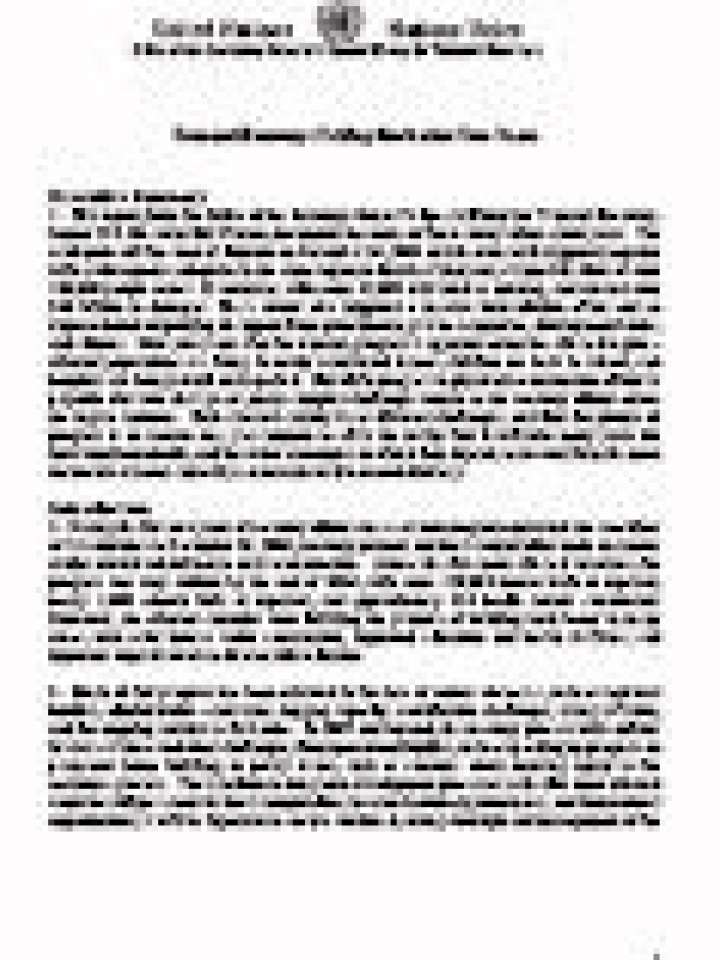Tsunami recovery: taking stock after two years
This report, from the Office of the Secretary-General’s Special Envoy for Tsunami Recovery, former U.S. President Bill Clinton, documents the status of the recovery effort at two years. The earthquake off the coast of Sumatra on December 26, 2004 and the tsunami it triggered, together with a subsequent earthquake in the same region in March of that year, claimed the lives of over 186,000 people across 12 countries, with some 42,883 still listed as missing, and created over $10 billion in damages. These events also triggered a massive humanitarian effort and an unprecedented outpouring of support from governments, private companies, development banks, and citizens. Now, two years after the tsunami, progress is apparent across the affected region - affected populations are living in newly constructed homes, children are back in school, and hospitals are being rebuilt and repaired. But while progress in physical reconstruction efforts is palpable after two short years, many complex challenges remain as the recovery efforts across the region continue. Each affected country faces different challenges, and thus the picture of progress is an uneven one; yet common to all is the reality that it will take many years for individual households, and the wider economies on which they depend, to recover from the most destructive disaster caused by a natural hazard in recorded history.
